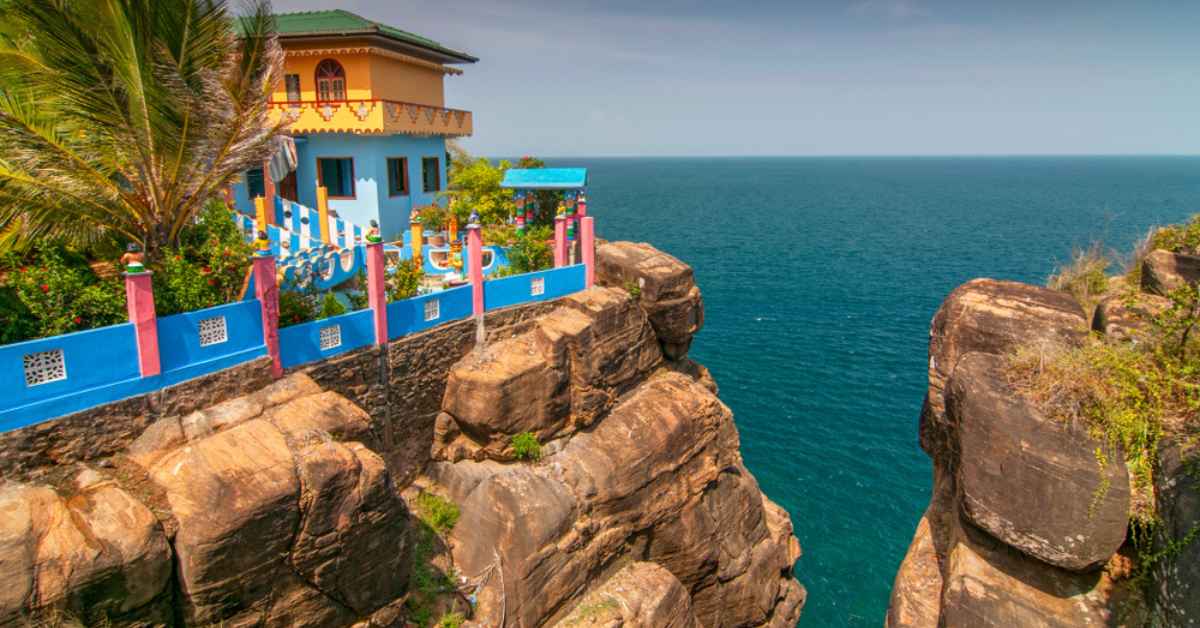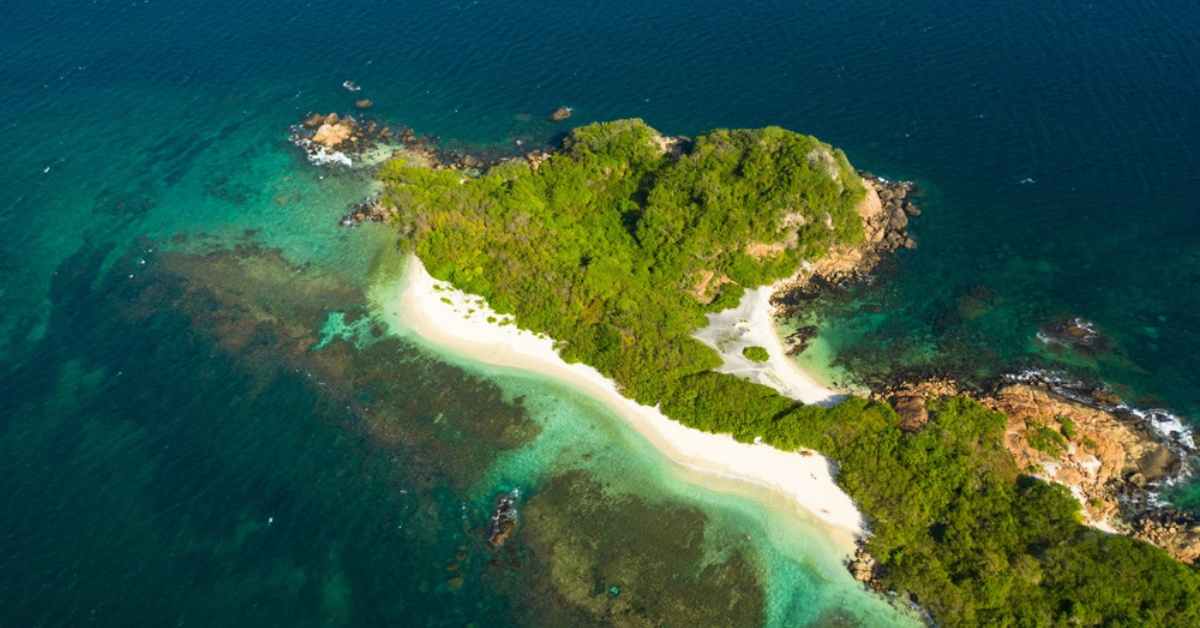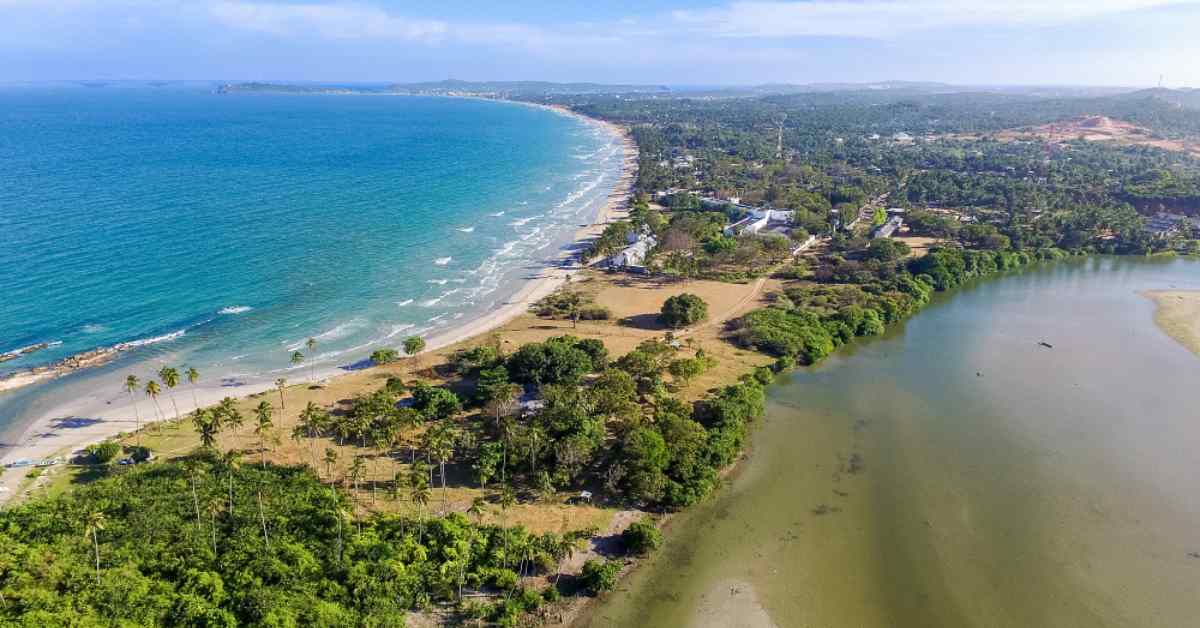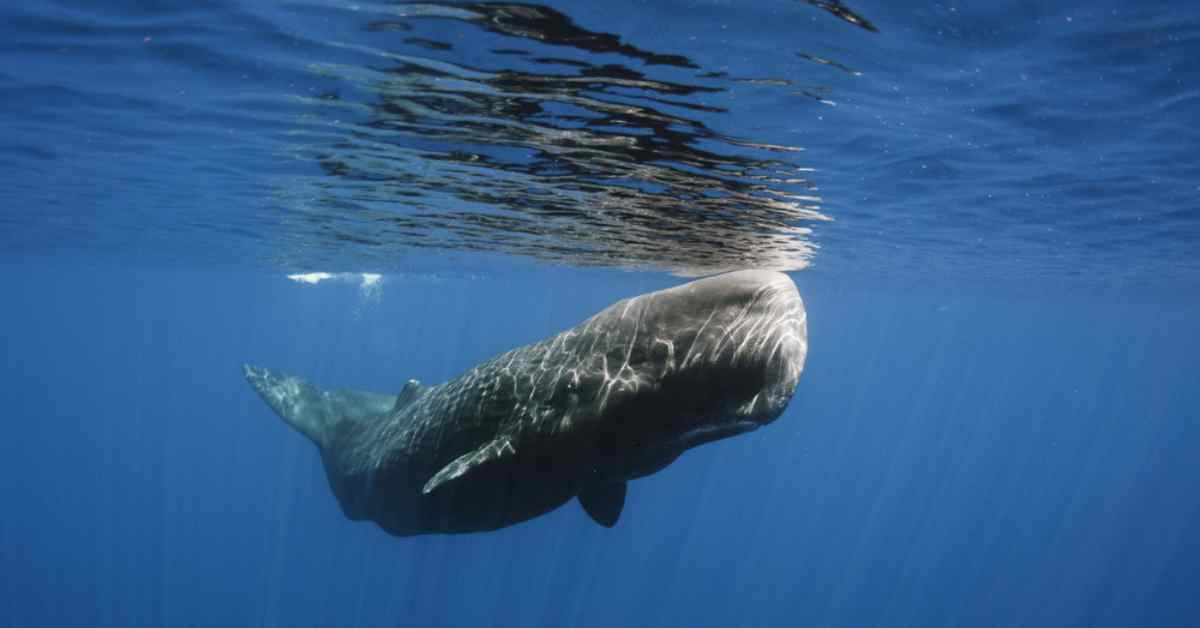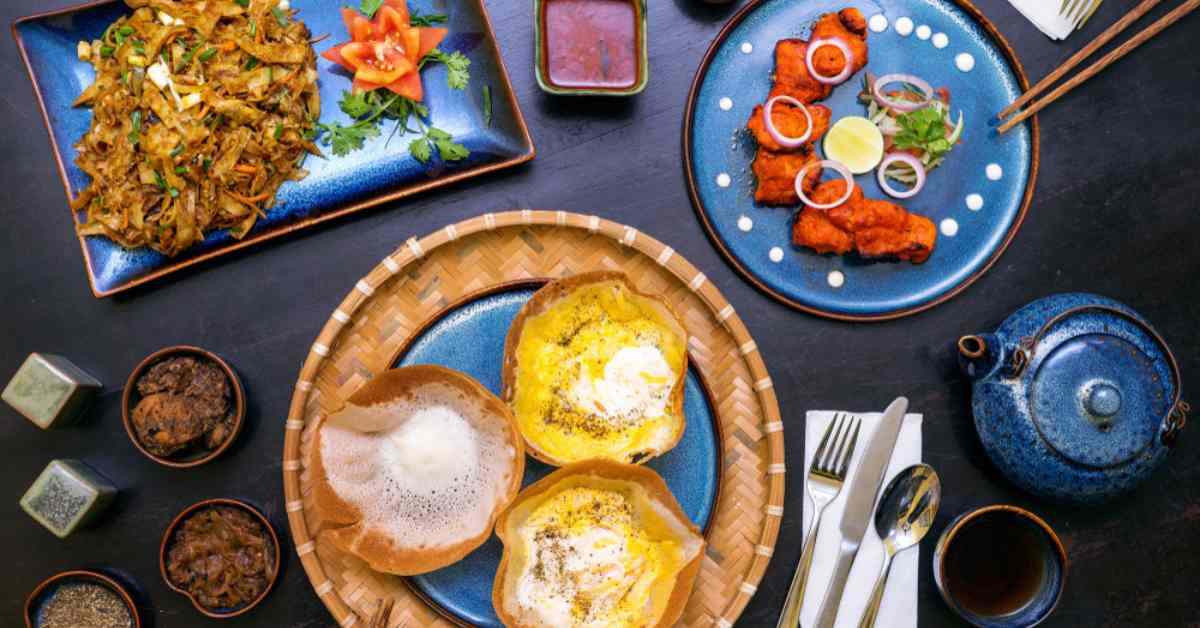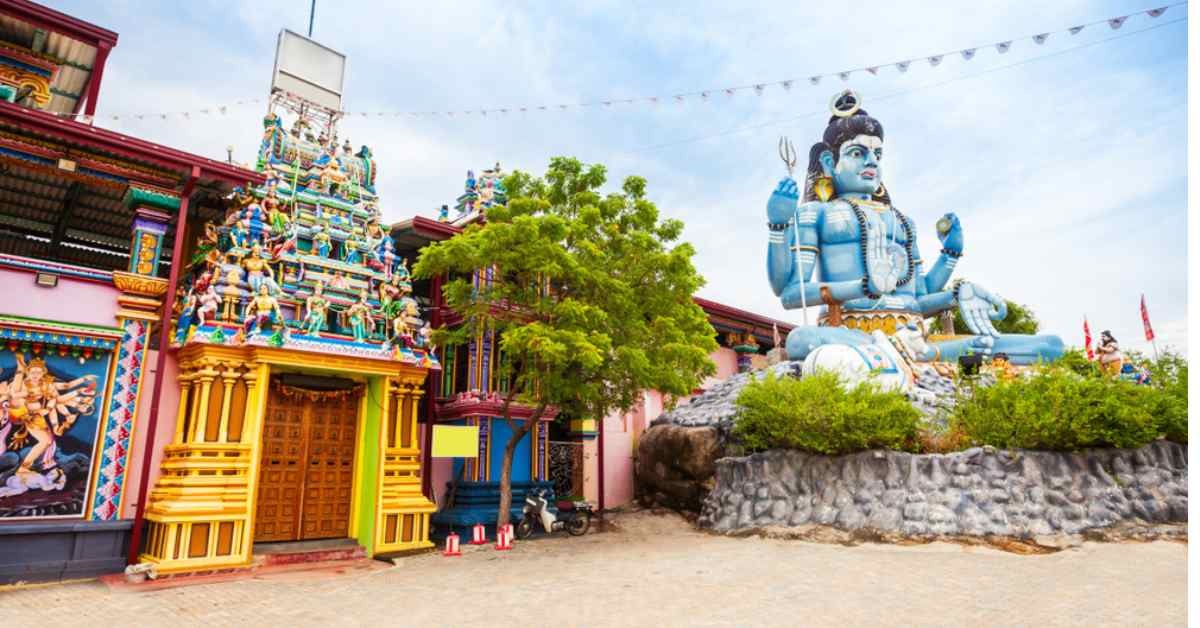Trincomalee should be at the top of your list if you’re looking for a tropical paradise that’s still off the beaten path. Trincomalee is on Sri Lanka’s northeast coast. It is known for its beautiful beaches, exciting history, and wide range of wildlife. In this article, we’ll explore all Trincomalee offers and why it should be your next vacation destination.
Introduction to Trincomalee
Trincomalee is a city on the east coast of Sri Lanka, known for its stunning beaches, rich history, and diverse wildlife. It is a popular destination for tourists who want to experience the natural beauty and cultural heritage of Sri Lanka.
Trincomalee has a long and fascinating history, dating back to ancient times. Over the centuries, different empires and dynasties have ruled the city, such as the Chola, Pandya, and Vijayanagara kingdoms and the Portuguese, Dutch, and British colonial powers.
Today, Trincomalee is a vibrant and bustling city that offers visitors various experiences. From exploring ancient temples and historic forts to relaxing on beautiful beaches and wildlife safaris, there’s something for everyone in Trincomalee.
History of Trincomalee
Trincomalee is a natural deep-water harbour that has attracted seafarers, traders, and pilgrims from various parts of the world since ancient times. The port has been used since 400 BCE, and the earliest inscriptions in Trincomalee are in the Tamil language. The Tamil settlement in Trincomalee was one of the oldest settlements on the island. The port of Trincomalee has played a significant role in the history of Sri Lanka and has been mentioned in various ancient texts.
Trincomalee has been home to several Kovil temples dedicated to deities of the Hindu pantheon, as well as a Buddhist vihara and a Christian Catholic church. The worship of Eiswara is noted to have been the original worship of the island, and Kuveni, the ancient Yakkha queen, worshipped the deity. The Siva temple of Gokarna Bay is mentioned in the Mahabharata, the Hindu epic that was written between 400 and 100 BCE. The shrine is the next pilgrimage spot for Hindus en route south, following Kanyakumari of the early Pandyan kingdom and Tamraparni island (Kudiramalai).
The Siva-worshipping Siddhar Patanjali’s birth in the city in 180 BCE and its connections to another Siddhar Agastya from at least the 5th–4th century BCE suggests that Yoga Sun Salutation originated on the peninsula of Trincomalee. Trincomalee’s suburb Kankuveli is home to ruins of the Tamil Siddhar medical university established by Agastya, the “Agathiyar Thapanam”, which helped spread Tamraparniyan science across the continent during the pre-classical era.
Historical records say that Mahasena of Anuradhapura destroyed the Hindu temple to make peace with the monks of the Anuradhapura Maha Viharaya, who Mahasen had hurt. He learned from Sangamitta, a Tamil Buddhist monk from the early Chola country. Sangamitta stepped in to help Vetullavada followers persecuted during the Tamraparniyan Abhayagiri versus Maha Viharaya sectarianism in Anuradhapura. This explains some of the Buddhist influences on Trincomalee.
Culture of Trincomalee
Trincomalee is a culturally diverse city in the Eastern Province of Sri Lanka. Historically, Hindu, Muslim, Buddhist, and Christian cultures have all affected the town.
The Hindu god Shiva is honoured at the Koneswaram Temple, one of Trincomalee’s most well-known cultural sites. The temple is on a hill overlooking the Trincomalee Harbor and has been a place of worship for Hindus for thousands of years.
Another important cultural site in Trincomalee is Fort Frederick, built by the Portuguese in the 17th century and later taken over by the Dutch and the British. The fort is now a major tourist attraction and is home to a museum that showcases the city’s colonial history.
Trincomalee is also known for its large and active Muslim population, which has been a critical part of the city’s culture and economy for hundreds of years. The city’s bustling markets and bazaars are filled with vendors selling traditional Muslim clothing, jewellery, and food.
Finally, Trincomalee is home to several Buddhist temples and monasteries, including the Seruwila Mangala Raja Maha Vihara, which is one of the oldest and most important Buddhist temples in Sri Lanka.
Top Attractions in Trincomalee
Trincomalee is a popular tourist destination in Sri Lanka with many attractions. Here are some of the top attractions in Trincomalee:
Pigeon Island National Park
Pigeon Island National Park is renowned for its diverse marine life, coral reefs, and powdery beaches, making it a popular snorkelling and diving destination.
In 1963, the park was designated as a sanctuary, and in 2003, it was elevated to national park status. It consists of two islands and the ecosystem of the surrounding coral reef, which encompasses a total land area of 1,814,33 square yards. The park derives its name from the endemic Sri Lanka pigeon that inhabits the islands.
Visitors can explore the park on foot by following one of the nature trails that meander through the forest and offer breathtaking ocean views. The park also contains several historical landmarks, including the ruins of a British fort and a colonial-era Dutch cemetery.
Pigeon Island National Park is a significant conservation area that serves to preserve the coastal and marine ecosystems’ biodiversity in Sri Lanka. It is also a popular tourist destination and a must-see for beachgoers and nature enthusiasts visiting the region.
Thiru Koneswaram Temple
The Thiru Koneswaram Temple, also known as the Koneswaram Kovil, is dedicated to Lord Shiva and is regarded as one of Sri Lanka’s Pancha Ishwarams, or five main Shiva temples.
The temple is believed to have been constructed during the tenure of King Konesar of the Chola dynasty in the third century B.C. It was subsequently expanded and renovated by numerous rulers over the centuries. Finally, the temple was reconstructed in the 1950s and 1960s after being devastated during the colonial era.
On a promontory overhanging the Indian Ocean, the Thiru Koneswaram Temple offers breathtaking views of the surrounding area. The temple compound consists of numerous shrines, a primary prayer chamber, and a massive statue of Lord Shiva. The temple’s architecture combines Dravidian, Pallava, and Kalinga styles, reflecting the diverse influences that have influenced Sri Lanka’s history. More Details
The temple is a significant pilgrimage destination for Hindus, who come to worship Lord Shiva and seek his blessings. It is also a popular tourist destination due to its spectacular architecture, rich cultural and religious history, and attractive location.
In addition to its religious significance, the Thiru Koneswaram Temple is also associated with the legendary sage Agastya, who is said to have meditated there. Moreover, several fables and legends are associated with the temple, adding to its mystique and allure.
Sober Island
Sober Island is a picturesque island just a short distance from Trincomalee Harbour. It has a rich history and was kept from public view during the war. However, it has now been developed into a holiday retreat by the government and is run by the Navy. The island’s fascinating history dates back to 1775 when a teenage Midshipman named Horatio Nelson arrived in Trincomalee aboard the H.M.S. Sea Horse.
It is known for its stunning white sand beach and crystal-clear waters, making it a popular destination for swimming, snorkelling, and diving. The island is accessible by boat, and several tour operators in Trincomalee offer day trips to Sober Island. However, bringing your food and water is recommended as the island has no facilities. More Details
Pathrakali Amman Kovil Temple
Pathrakali Amman Kovil Temple is a prominent Hindu temple in Trincomalee, dedicated to the goddess Kali. The temple is on a hill overlooking the Trincomalee harbour, providing a breathtaking view of the town and the ocean. The temple has a rich history and is believed to have been built during the reign of the Tamil kings. The temple complex also includes a shrine dedicated to Lord Ganesh and a sacred pond. The temple attracts many devotees and tourists, especially during the annual Kali Puja festival.
Uppuveli Beach
Uppuveli Beach is a popular beach destination about 6 kilometres from Trincomalee town. Its long stretch of white sandy beach, crystal clear waters, and palm trees make it a perfect spot for sunbathing, swimming, and relaxing. Several water sports activities are available here, such as snorkelling, diving, and surfing. Uppuveli Beach is known for its lively nightlife with beach parties and bars. Many hotels and guesthouses are near the beach, making it a convenient location for tourists. The beach is easily accessible by tuk-tuk or taxi from Trincomalee town. More Details
Kanniya Hot Water Springs
Kanniya Hot Water Springs is a popular attraction in Trincomalee, about 8 kilometres from the city centre. The springs are a group of seven wells containing natural hot water believed to have healing properties. The water temperature in the wells ranges from 35 to 42 degrees Celsius. The site is considered sacred by Hindus and Buddhists, and the springs are believed to have been used for over 2,000 years. Visitors can bathe in the warm water and enjoy the therapeutic benefits of the mineral-rich springs. There are also facilities for changing clothes and a small souvenir shop near the entrance. More Details
Nilaveli Beach
Nilaveli Beach is a pristine and picturesque beach located about 16 km northwest of Trincomalee. It is widely regarded as one of the most beautiful beaches in Sri Lanka, boasting crystal-clear blue waters and powdery white sand. The beach stretches for several kilometres and is surrounded by lush coconut palms and other greenery. It is a popular destination for sunbathing, swimming, and snorkelling. Visitors can also take a boat ride to nearby Pigeon Island National Park, known for its colourful coral reefs and diverse marine life. The beach has several hotels and resorts offering comfortable accommodations for tourists. More Details
Fort Frederick
Fort Frederick is a historical fort located in Trincomalee, Sri Lanka. It was built by the Portuguese in 1624 and later captured by the Dutch, who significantly modified the structure. The British then took control of the fort in 1795 and used it as a base for their military operations during their occupation of Sri Lanka.
Today, the fort is a popular tourist attraction open to the public. Visitors can explore the various sections of the defence, including the ramparts, the guard room, and the Governor’s residence. The fort also offers stunning views of Trincomalee Harbour and the surrounding landscape. More Details
Maritime Museum
The Maritime Museum in Trincomalee is a popular attraction for history and maritime enthusiasts. The museum showcases the naval history of Sri Lanka, including the country’s ancient maritime traditions, colonial naval influences, and the modern Sri Lankan Navy. In addition, the museum has an impressive collection of artifacts and exhibits, including antique weapons, ship models, maps, and photographs. Visitors can also see the remains of the H.M.S. Hermes, a British aircraft carrier sunk during World War II, located near the museum. The Maritime Museum is a must-visit destination for those interested in Sri Lanka’s rich naval history.
Marble Beach
Marble Beach is a beautiful and secluded beach located near Trincomalee. The beach is known for its clear turquoise waters and white sand, making it a popular spot for swimming, snorkelling, and sunbathing. The name “Marble Beach” comes from the smooth, white, and polished rocks that line the shore. The beach is relatively undeveloped, with limited facilities, but it offers a peaceful and serene environment for those looking to relax and unwind. Visitors can also take a boat ride to nearby Pigeon Island for some great snorkelling opportunities.
Kuchchaveli Beach
Kuchchaveli Beach is located about 30 km north of Trincomalee and is known for its long white sandy beach and crystal-clear waters. This secluded beach is ideal for swimming, sunbathing, and water sports such as surfing and snorkelling. Visitors can also take a leisurely walk along the coast, enjoying the scenic views of the Indian Ocean. The area surrounding Kuchchaveli Beach is also rich in biodiversity, making it a popular spot for bird-watching and nature photography.
Army Museum Orr’s Hill
The Army Museum at Orr’s Hill is a small museum on a hill overlooking the Trincomalee harbour. The museum displays various military artifacts from Sri Lanka’s colonial past to the present, including weapons, uniforms, and photographs. It is a great place to learn about the country’s military history and the role of the Sri Lankan army in different conflicts. The museum also provides a panoramic view of the Trincomalee town and harbour.
Diamond Hill
Diamond Hill is a picturesque location in Trincomalee that offers stunning panoramic views of the city and the sea. It is a popular spot for locals and tourists for its breathtaking views and peaceful atmosphere. Visitors can hike up to the top of the hill to witness the stunning scenery and explore the nearby natural caves. Diamond Hill is an ideal spot for photography enthusiasts, nature lovers, and those who seek a tranquil escape from the bustling city.
Salli Muthumariamunam Kovil Temple
The Salli Muthumariamman Kovil Temple, located in Trincomalee, is a Hindu temple dedicated to the goddess Mariamman. The temple is over 200 years old and is believed to have been built by Tamil immigrants who settled there. The temple is known for its colourful and intricate architecture, including a towering gopuram (entrance gate) decorated with statues of various gods and goddesses. It is a popular site for devotees and tourists alike, especially during the annual festival held in honour of Mariamman, which includes elaborate processions and cultural performances.
Seruwawila Rajamaha Viharaya
The Seruwawila Rajamaha Viharaya is a Buddhist temple in Sri Lanka’s Trincomalee district. It is believed to have been constructed during the tenure of King Kavantissa in the second century B.C.E. and is regarded as one of the Solosmasthana, Buddhism’s 16 holy sites.
The temple houses a sacred stupa that is said to contain a strand of Buddha’s hair. In addition, it is known for its ancient rock inscriptions and palace ruins. The temple is a prominent Buddhist pilgrimage destination in Sri Lanka, frequented by many tourists.
In July, the temple hosts the annual Seruwila Mangalyaya festival, which attracts devotees from all over the country. At the festival, there are offerings of the sacred stupa and traditional music, dance, and cultural shows.
Seruwawila Rajamaha Viharaya is an important cultural and historic site in Sri Lanka that shows the country’s long Buddhist history.
Girihadu Seya Temple
Girihadu Seya Temple is an ancient Buddhist temple in Thiriyaya village, about 30 kilometres from Trincomalee. The temple is believed to have been built during the reign of King Kavantissa in the 2nd century B.C. and is considered to be one of the oldest temples in Sri Lanka. The temple is said to enshrine the relics of the Buddha and is therefore considered a very sacred place by Buddhists.
The temple is located on a hill and is accessible by a series of steps that lead to the top. The mountain offers a breathtaking view of the surrounding countryside and is a popular destination for tourists and pilgrims alike. The temple is also known for its intricate carvings and ancient stone inscriptions, which are a testament to the rich history and culture of Sri Lanka.
The temple is open to visitors throughout the day and has no entrance fee. However, visitors must dress modestly and remove their shoes before entering the temple. It is also customary to make a small donation as a gesture of respect when visiting the temple. More Details
Trincomalee War Cemetery
The Trincomalee War Cemetery is located on the northern outskirts of Trincomalee and is dedicated to the memory of soldiers from the Commonwealth who died during World War II. The cemetery contains the graves of over 1,000 soldiers, including those from the United Kingdom, Sri Lanka, India, Canada, Australia, and other Commonwealth countries. The Commonwealth War Graves Commission maintains the cemetery, a peaceful and solemn place to pay respects to those who lost their lives during the war. More Details
Kokkilai Bird Sanctuary
The Kokkilai Bird Sanctuary is a haven for birdwatchers and nature enthusiasts. Located about 50 km north of Trincomalee, it is home to many bird species, including migratory birds from Siberia. The sanctuary is spread over 3,800 hectares and includes marshes, mangroves, and lagoons. Visitors can take a boat ride through the sanctuary to observe the birds in their natural habitat. Some bird species that can be spotted here include painted storks, spot-billed pelicans, Eurasian spoonbills, and various species of herons and egrets. The sanctuary also serves as a breeding ground for many species of fish and turtles.
Gokanna Raja Maha Vihara Temple
Gokanna Raja Maha Vihara Temple, also known as the Devinuwara temple, is a Buddhist temple in the town of Devinuwara in the Trincomalee district. The temple is believed to have been built during the reign of King Dappula II in the 7th century and was later renovated by King Parakramabahu I. The temple is dedicated to Lord Buddha and is one of the most important religious sites in the area.
The temple features an ancient stupa, several stone carvings, and other architectural marvels that showcase ancient Sinhalese art and architecture. The temple also features a Bo tree, which is believed to be one of the 32 saplings of the Jaya Sri Maha Bodhi tree in Anuradhapura, making it a highly revered site for Buddhists.
Gokanna Raja Maha Vihara Temple is also significant because it is believed to be the place where the Buddhist monk Mahinda Thera first landed in Sri Lanka to spread Buddhism during the reign of King Devanampiya Tissa in the 3rd century B.C.E. The temple has since become a popular pilgrimage site for Buddhists, who come to pay their respects and offer prayers.
Dutch Bay Beach
Dutch Bay Beach is a beautiful and secluded beach in Trincomalee’s Dutch Bay area. This beach is surrounded by a picturesque landscape of lush green trees and rocks, providing visitors with a peaceful and relaxing atmosphere. The beach is perfect for swimming and sunbathing and is a popular spot for fishing and boating. In addition, the clear and calm water makes it ideal for snorkelling and scuba diving. Dutch Bay Beach is also home to several local restaurants and cafes, where visitors can enjoy a variety of Sri Lankan and international dishes.
Swami Rock
Swami Rock is a popular tourist spot in Trincomalee, Sri Lanka. It is located on a cliff overlooking the Indian Ocean and offers a stunning view of the ocean and the surrounding landscape. The rock is named after Swami Vivekananda, an Indian philosopher who is said to have meditated on this spot during his visit to Sri Lanka in 1897. The area around Swami Rock is also home to several temples and shrines, making it a spiritual and cultural hub. In addition, it is a popular spot for sightseeing, photography, and enjoying the beautiful scenery.
Activities to do in Trincomalee
Trincomalee offers a range of activities for visitors to enjoy. Here are some popular things to do:
Visit the beaches
Trincomalee is known for its beautiful beaches that offer breathtaking views of the Indian Ocean. Trincomalee’s most popular beaches include Uppuveli Beach, Nilaveli Beach, Marble Beach, and Kuchchaveli Beach. Visitors can soak up the sun, swim in crystal-clear waters, and indulge in water sports such as snorkelling, scuba diving, and surfing. The beaches also offer an excellent opportunity to enjoy fresh seafood and local delicacies at the many beachside restaurants and cafes.
Explore historical sites walk
Trincomalee has a rich history and several historical sites to explore. Some must-visit historical areas include the Thiru Koneswaram Temple, Pathrakali Amman Kovil Temple, Fort Frederick, and the Trincomalee War Cemetery. You can also visit the Army Museum Orr’s Hill to learn more about the area’s military history. Additionally, the Maritime Museum is another excellent place to explore the maritime history of Trincomalee.
Whale watching
Whale watching is another popular activity in Trincomalee. Visitors can take a boat tour to witness the majestic blue whales and other species like sperm whales, dolphins, and sea turtles in their natural habitat. The best time to go whale watching in Trincomalee is from May to October, when the seas are calm, and the whales migrate to the warmer waters of the Indian Ocean. Several tour operators in Trincomalee offer whale-watching tours with experienced guides to ensure the safety of both visitors and marine life.
Scuba Diving in Trincomalee
Trincomalee is a popular scuba diving destination in Sri Lanka, offering divers a chance to explore the beautiful underwater world of the Indian Ocean. The diving season in Trincomalee runs from May to September when the sea is calm, and visibility is at its best. There are several dive sites around Trincomalee, each with unique features and marine life. Some popular dive sites include Pigeon Island, Swami Rock, and Fort Fredrick.
Divers can expect to see various marine life in Trincomalee, including colourful corals, schools of tropical fish, turtles, and even sharks. In addition, several wrecks in the area can be explored, such as the SS British Sergeant and the S.S. Conch.
Several dive centres in Trincomalee offer scuba diving courses and guided dives for all levels, from beginners to experienced divers. These dive centres provide all necessary equipment and safety measures, ensuring a safe and enjoyable diving experience.
Snorkelling at Red Rocks
Snorkelling at Red Rocks is a popular activity for visitors to Trincomalee. Red Rocks is a coral reef just off the coast and offer an excellent opportunity for snorkelling in crystal clear waters. The reef is home to various colourful fish and other marine life, making it a perfect spot for underwater exploration. Snorkelling gear can be rented from local dive shops, and boat tours can also be arranged to take you to Red Rocks. Early morning is recommended when the water is calmer, and visibility improves.
Play Golf at China Bay Golf Club
China Bay Golf Club is a popular golf course in Trincomalee, Sri Lanka. The club is open to the public and offers a challenging 18-hole course with stunning views of the surrounding mountains and ocean. Golf enthusiasts can enjoy a game or take lessons from experienced professionals. The club also has a restaurant and bar, making it a great place to relax after a round of golf.
Taste local cuisine
Trincomalee is a great place to try out local Sri Lankan cuisine. Seafood is a specialty in the area, and you can find a variety of dishes made with fresh seafood, such as crab, prawns, and fish. Some must-try words include seafood curry, kottu roti (a dish made with shredded roti bread and vegetables), hoppers (a type of pancake made with coconut milk), and string hoppers (a kind of rice noodle). Also, remember to try local sweets such as milk toffee and kakis. In addition, local restaurants and street vendors around Trincomalee offer delicious and authentic Sri Lankan cuisine.
Attend cultural events
Trincomalee has a rich cultural heritage; visitors can attend various events yearly. However, one of Trincomalee’s most significant cultural events is the Koneswaram Temple Festival, annually in July and August. This festival celebrates the Hindu god Shiva and includes:
- Colourful processions.
- Traditional music and dance performances.
- Elaborate ceremonies at the Koneswaram Temple.
Other cultural events in Trincomalee include the Vel festival, which honours the Hindu god Murugan, and the Maha Shivaratri festival, which celebrates Shiva’s marriage to Parvati. Visitors can also attend local cultural performances, such as traditional dance shows and music concerts, showcasing the region’s unique heritage.
Wildlife in Trincomalee
Trincomalee is home to diverse wildlife on land and in the ocean. Some of the unique natures of Trincomalee include:
Dolphins and Whales
Trincomalee is known for its abundant marine life, including dolphins and whales. Visitors can take a boat tour to see these majestic creatures in their natural habitat. The best time to go whale watching in Trincomalee is from May to August when the seas are calm, and the whale sightings are at their highest. In addition, the blue whale, the largest mammal on earth, can often be spotted in the waters around Trincomalee. Dolphins are also commonly seen during these boat tours, providing visitors with a fun and playful experience.
Sea Turtles
The beaches of Trincomalee are important nesting sites for several species of sea turtles, including the Olive Ridley, Green and Leatherback turtles.
Birds
Trincomalee is a paradise for bird watchers, with various habitats to explore, including wetlands, forests, and coastal areas. The Kokkilai Bird Sanctuary is a popular destination for bird watchers, with over 150 species, including migratory birds from Siberia and Europe. In addition, the sanctuary is home to various water birds, such as painted storks, pelicans, and herons. Other bird-watching spots include Pigeon Island, Sober Island, and the Kanniya Hot Springs. Some bird species in these areas include frigatebirds, terns, kingfishers, and cormorants.
Elephants
Although Trincomalee is not known for elephant sightings, the nearby areas of Minneriya, Kaudulla and Wasgamuwa National Parks are home to large herds of elephants. These parks can be easily reached from Trincomalee and offer the opportunity to see elephants in their natural habitat. It’s essential to choose responsible and ethical safari operators and avoid any activities involving riding elephants or other animal exploitation.
Reptiles
Trincomalee is home to various reptiles that can be observed in their natural habitat. Visitors can go on guided tours in areas like the Kanniya Hot Springs, Pigeon Island National Park, and Nilaveli Beach to see different species of reptiles, including monitor lizards, snakes, and crocodiles. Be cautious and follow safety guidelines when observing reptiles, as some species can be dangerous.
Deers
Trincomalee is home to several species of deer, including the spotted deer, the axis deer, and the sambar deer. These deer can be found in the city’s forests and nearby wildlife sanctuaries, such as the Kanniya Hot Springs Sanctuary and the Kokkilai Bird Sanctuary. In addition, visitors can go on guided wildlife tours to spot these beautiful animals in their natural habitat.
Weather in Tricomalee
Trincomalee has a tropical climate, with relatively consistent temperatures throughout the year. The average high temperature ranges from around 29-33°C (84-91°F) while the average low temperature is about 23-25°C (73-77°F).
The city experiences two distinct monsoon seasons, with the northeast monsoon occurring from October to January and the southwest monsoon from May to July. During the northeast monsoon, Trincomalee receives most of its rainfall, with heavy downpours and thunderstorms being common. Conversely, the southwest monsoon brings less rain, resulting in occasional showers and thunderstorms.
The best time to visit Trincomalee is during the dry season from May to September when the weather is generally sunny and pleasant. However, visitors should be prepared for occasional rain showers throughout the year.
Local Food in Trincomalee
Trincomalee is known for its delicious local food, which includes a wide range of dishes that show how many different cultures have influenced the area. Some popular local foods in Trincomalee are:
Dosa
Trincomalee dosa is a popular street food in Trincomalee, Sri Lanka. It is a thin, crispy pancake from a batter of fermented rice and urad dal (split black gram). It is typically served with coconut chutney and sambar, a spicy vegetable soup. Trincomalee dosa is often eaten for breakfast or as a snack. It is a must-try for anyone visiting Trincomalee and looking to taste the local cuisine.
Vaddai
Vadai is a popular South Indian snack made with lentil batter and deep-fried until crispy. It is typical street food in Sri Lanka, including Trincomalee, often served with chutney or sambar. The lentil batter is made with urad dal and spices; other ingredients like onions, curry leaves, or chilli peppers are sometimes added for flavour.
Kottu Roti
Kottu Roti is a famous Sri Lankan street food consisting of chopped-up flatbread (roti) stir-fried with vegetables, eggs, and meat and flavoured with various spices and sauces. The dish is typically served with a side of curry or chutney. You can find Kottu Roti in Trincomalee at many local eateries and restaurants.
Seafood Curry
Trincomalee is known for its delicious seafood curries, made with fresh fish, crabs, prawns, and other seafood caught in the waters around the city. The curries are often prepared with coconut milk, spices, and other local ingredients, giving them a unique and flavorful taste. Some popular seafood curries in Trincomalee include fish, crab, prawn, and cuttlefish curry. Visitors can enjoy these curries at local restaurants and eateries throughout the city, particularly near the beaches and harbour.
Lamprais
Lamprais is a traditional Sri Lankan dish that consists of rice, meat (usually chicken or beef), and vegetables, all cooked together in a banana leaf packet. The packet is then baked or steamed until the flavours of the ingredients meld together. It is a popular dish in Sri Lanka and can be found in many restaurants and food stalls. In Trincomalee, lamprais are often served as a special occasion dish and are a must-try for visitors.
Hoppers
Hoppers are a famous Sri Lankan dish made from fermented rice flour, coconut milk, and spices batter. The batter is cooked in a small wok-like pan, creating a bowl-shaped pancake with a crispy edge and a soft, spongy centre. Hoppers are often served with various accompaniments, such as coconut sambal, curry, and chutneys, and are a popular breakfast or dinner dish in Sri Lanka.
Goat meat curry
Goat meat curry is a popular dish in Trincomalee, made with tender pieces of goat meat cooked in spicy gravy with a blend of aromatic spices and coconut milk. It is often served with rice, roti or bread and accompanied by other side dishes such as sambals, pickles, and fried vegetables.
Sambol
Sambol is a traditional Sri Lankan dish typically made with chilli peppers, coconut, lime juice, and other ingredients such as onion, tomato, and Maldive fish. It is often served as a condiment or side dish to accompany rice and curry.
Safety in Trincomalee
Trincomalee is generally considered a safe place for tourists to visit. However, travellers should exercise caution and take necessary safety measures like elsewhere. Petty crimes such as pickpocketing and theft can occur in crowded areas and tourist spots, so keeping an eye on your belongings and avoiding carrying large amounts of cash is essential. It’s also advisable to avoid walking alone in deserted areas at night and to use licensed taxis or transportation services. Overall, common sense and vigilance can help ensure a safe and enjoyable experience in Trincomalee.
Be aware of your surroundings and avoid strolling alone at night in isolated areas. Please only leave your valuables in public locations, and store them in a secure location at your place of residence. When travelling by tuk-tuk or taxi, negotiate the fare before entering the vehicle. Be cautious when using credit or debit cards, and attempt to use them only at reputable establishments. Keep abreast of any travel advisories or warnings issued by your embassy or the local authorities. Follow local customs and traditions, and be mindful of the e local culture. In an emergency, you should contact the local police or seek assistance from your embassy or consulate.
Accommodation in Trincomalee
Trincomalee offers a range of accommodation options to suit various budgets and preferences. From luxury resorts to budget guesthouses, there is something for everyone. There are also several homestays and guesthouses available for budget travellers. It’s recommended to book in advance, especially during the peak season, to secure the best deals and availability.
Getting to Trincomalee
Trincomalee is located in the eastern part of Sri Lanka and can be reached by several modes of transportation.
By Air
The nearest international airport is Bandaranaike International Airport in Colombo, which is about 260 km away from Trincomalee. Domestic flights are available from Colombo to Trincomalee’s China Bay Airport, located approximately 6 km from the city.
By Train
Trincomalee is well-connected by train, with frequent services from major cities in Sri Lanka, such as Colombo, Kandy, and Anuradhapura. The journey from Colombo to Trincomalee takes approximately 7-8 hours, depending on the train you take. Both express and local trains are available, and tickets can be purchased at the train station or online through the Sri Lanka Railways website.
By Bus
Trincomalee can be easily reached by bus from several major cities in Sri Lanka, including Colombo, Kandy, Anuradhapura, and Jaffna.
From Colombo, you can take a bus from the Central Bus Stand in Pettah or the Colombo Fort Railway Station. The journey takes 6-8 hours, depending on traffic and road conditions.
From Kandy you can take a bus from the Kandy Bus Stand. The journey takes around 4-5 hours.
From Anuradhapura you can take a bus from the Anuradhapura Bus Stand. The journey takes around 3-4 hours.
From Jaffna you can take a bus from the Jaffna Bus Stand. The journey takes around 5-6 hours.
It’s always a good idea to check the bus schedule and availability beforehand, especially during peak travel seasons.
By Car or Tuk Tuk
Trincomalee is accessible by car from various parts of Sri Lanka. The journey can take 5 to 8 hours, depending on the starting point and traffic conditions.
If you’re travelling from Colombo, take the Colombo – Katunayake Expressway and the E03 highway towards Kurunegala. Take the A6 road towards Anuradhapura and the A12 highway towards Trincomalee.
If you’re travelling from Kandy, take the A9 highway towards Anuradhapura and then the A12 highway towards Trincomalee.
If you’re travelling from Polonnaruwa, take the A11 highway towards Dambulla and then the A6 highway towards Trincomalee.
It’s important to note that roads in Sri Lanka can be narrow and winding, and driving can be challenging for those unfamiliar with local road conditions. Therefore, hiring a driver or using a reputable taxi service is recommended.
By Taxi
If you want to get to Trincomalee by taxi, several cities, including Galle, Mirissa, Kandy, and Anuradhapura, offer this service.
From Galle or Mirissa, the taxi ride can take around 7-8 hours, as the distance is approximately 350 km. In addition, you’ll pass through several cities and towns, including Matara, Hambantota, and Tangalle.
From Kandy, the distance to Trincomalee is around 200 km, and the taxi ride can take about 4-5 hours. Along the way, you’ll pass through several scenic areas, including the Knuckles Mountain Range and the Mahaveli River.
From Anuradhapura, the distance to Trincomalee is around 110 km, and the taxi ride can take 2-3 hours. Along the way, you’ll pass through several smaller towns, including Habarana and Polonnaruwa.
When taking a taxi from any of these cities, it’s essential to negotiate the price with the driver beforehand to avoid any unexpected expenses.

